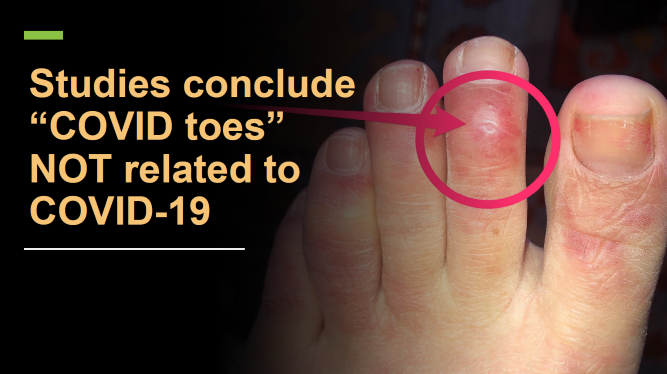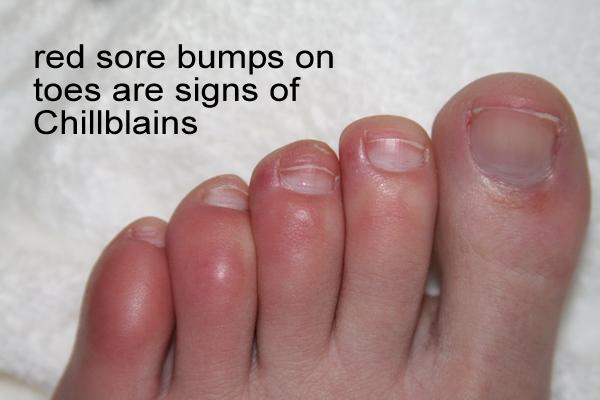“COVID toes” are not a sign of COVID-19 infection but a result of sedentary lifestyles linked to community lockdown measures, walking around barefoot at home, and a lack of warm footwear – at least according to two small studies published JAMA Dermatology.

The study from Belgium, led by Dr. Anne Herman, investigated the purplish-red chilblain-like lesions on the feet of 29 patients and the hands of 3 patients of individuals seen at a Brussels dermatology clinic from Apr 10 to 17. They found that COVID-19 is not the cause of these inflammations.
For starters, none of the patients tested positive for SARS-CoV-2, the virus that causes COVID-19, or had antibodies against the virus on serologic testing.
Biopsies of 22 skin samples also showed no evidence of the virus. Twenty of 31 patients (64%) reported mild symptoms characteristic of coronavirus, and 3 (10%) reported contact with a person who tested positive for COVID-19.
Doctors had assumed that COVID-19 is somehow at play, but it turns out that the assumption was not true. So what was the cause?
Nine of 31 patients (29%) had a history of chilblains, and 4 (13%) had Raynaud’s syndrome (discoloration of the fingers or the toes due to changes in temperature or emotional events).
In addition, 64% said they had been less physically active than normal while in lockdown, and most said they remained in socks or barefoot most of the day.

The other study from Spain, led by Dr. Ignacio Torres-Navarro from the University Hospital of la Fe Polytechnic in Valencia, analyzed “COVID toes” in 20 children hospitalized in Spain from Apr 9 to 15 with lesions on the hands and feet.
They had no clinical signs of COVID-19, tested negative on RT-PCR, and had no antibodies against the virus on serologic testing. So again, the coronavirus was not causing the toe injuries.
Histologic testing revealed that the lesions were chilblains. Nine of 20 patients (45%) had a history of Raynaud’s syndrome or chilblains, and 15 (75%) said they walked barefoot around their house during quarantine. Furthermore, only 2 lived in a home with heat.
“Other studies with improved microbiologic tests or molecular techniques aimed at demonstrating the presence of SARS-CoV-2 in the skin may help to clarify this problem,” the authors wrote.

So the symptom does not appear to be caused by COVID-19, but rather by chilblains.
A chilblain is a painful inflammatory condition that results from defective blood circulation on exposure to cold. The skin may first become itchy, then red and swollen with a burning sensation and very tender to touch. An infection may occur should the skin break down.
Another potential cause is Raynaud’s syndrome: a narrowing of the small arteries that supply blood to the skin in response to cold temperatures or stress.
Having chilblains does not necessarily mean that you have Raynaud’s. However, as both conditions are related to the circulation many people with Raynaud’s also have chilblains.









